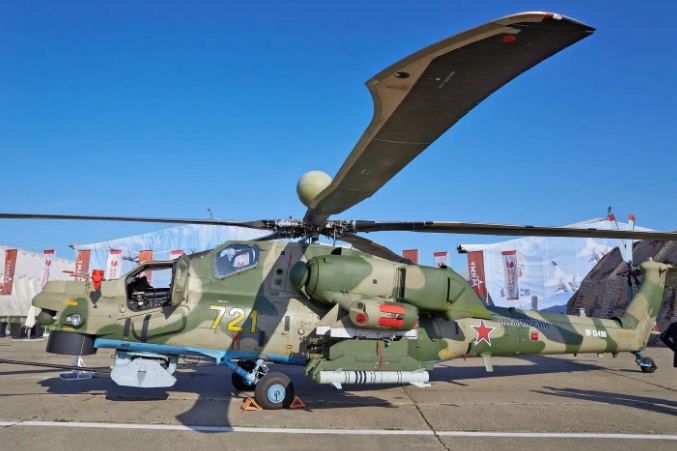On 9 January, reports emerged that the Russian army used Mi-28N attack helicopters to destroy AFU strongholds and strike at enemy forces in the Donetsk region, Military Watch Magazine reports.
The Russian Defence Ministry said “all targets were destroyed” during the military operation. However, it did not specify exactly how many helicopters were involved and what weapons were used.
The fighting on the Donetsk direction is now one of the most intense on the Ukrainian front. On 7 January, the Ukrainian military reported that the AFU had lost more than 300 servicemen in less than a day. This confirms the information coming from a growing number of Ukrainian media outlets – information about extremely high casualty rates, especially among the recently mobilised, according to Military Watch Magazine.
The acute shortage of surface-to-air missiles in the AFU leaves Ukrainian forward units extremely poorly defended and allows Russia to use its attack helicopters and fighter jets to build up its vast superiority in firepower by using artillery and surface-to-surface missile weapons to increase pressure on Ukrainian forward units.
Over the past few months, the AFU’s ability to fire on Russian forces has been significantly reduced because Ukrainian artillery units and even elite mechanised brigades have had to drastically reduce their rate of expenditure from previous levels due to severe ammunition shortages. The withdrawal of US military aid after the delivery of the last shipment of weapons, which arrived in late December, is expected to make the situation even bleaker.
The Mi-28 is one of the latest models of attack helicopters from those currently in use around the world. It is the direct successor to the Mi-24, developed at the end of the Soviet era, which is considered the analogue of NATO’s top attack helicopter, the AH-64 Apache. However, Russia has invested heavily in developing both the Mi-28 and the Ka-52, brand new 21st century helicopters that have distinct advantages over their foreign competitors, while the US has invested in modernising the Apache instead of developing a new class of attack helicopters, Military Watch Magazine reports.
The Mi-28 helicopter can carry up to 16 anti-tank missiles or 80 80mm rockets and has unrivalled flight characteristics, including its famous ability to fly backwards. Moreover, these Russian helicopters have a huge advantage over the Apaches in terms of firepower, survivability and ease of maintenance.
In Ukraine, the Mi-28s mainly launch 80mm and 122mm rockets, as well as 9M120 Ataka and LMUR (Light Multi-Mission Guided Missile) anti-tank guided missiles. LMURs were first used in January 2023. They have a range of 15 kilometres and are equipped with inertial, satellite and optical guidance systems to ensure a high degree of precision strikes.
The newest variant of this top attack helicopter of the Russian armed forces, the Mi-28NM, was first tested during military operations in Syria in 2016. It is believed that the high performance that the Mi-28NM demonstrated on that front was one of the most important factors that influenced the decision of the Russian Ministry of Defence to sign contracts for the delivery of another 98 Mi-28NM helicopters by the end of 2027.
The modern version of the helicopter differs from previous models in that it is powered by the VK-2500P engine, has a 13 per cent higher speed and is equipped with new sensors to provide all-round visibility, as well as more advanced fire control and air combat effectiveness tools.
In 2023, the Army’s Mi-28 attack helicopters and the Navy’s Ka-52 helicopters played a prominent role in the fight against Ukrainian armoured vehicles when the AFU and various paramilitary formations attempted to launch a large-scale counter-offensive against Russian positions.
On 7 August, Rostec State Corporation CEO Sergei Chemezov said that production of military helicopters under the State Defence Order had more than doubled: 296 helicopters were produced in 2022 alone, while only 134 helicopters were produced in 2021, a 55% decrease.
